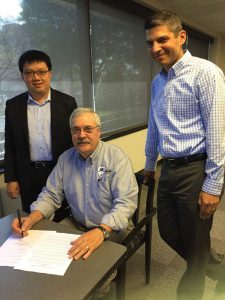The extraordinary devastation left by storms, earthquakes, and wildfires in 2017 dominated the news media for months. Many of our colleagues around the globe were directly affected by these events but still rose to the challenge by volunteering as emergency responders or by joining teams to study and report on lessons learned. Whether impacted or not, structural engineers keep the public safe from disasters every day.
We need to build on our shared strengths to achieve our common goal of an infrastructure that is both affordable and resilient, and solutions that can minimize the impact of disasters on people, property, and the economy.
First, we need to update and improve our design standards continuously. Standards must represent the combined wisdom of the global structural engineering community. While some may complain about the increasing complexity and breadth of design standards, we cannot ignore the latest knowledge yielded by research and studies of disaster impacts. Our imperative is to create standards that respond to the day-to-day needs of practicing professionals, but also allow them to apply the latest concepts accurately. The complexity of predicting response to extreme events shines a light on the need for performance-based design standards that advance the state of the practice and leverage the creativity and judgment of the structural engineer. Investment in these performance-based standards is critical to balancing cost and risk safely and effectively.
Second, we must improve the way that we disseminate new knowledge to the practice. Continuing education requirements for licensure currently focus on attendance and duration of coursework, with little emphasis on content. We should turn this model on its head and create priorities for lifelong learning that emphasize the best practices of the design community. New models for education, such as intensive guided online courses, offer the chance to provide peer-reviewed and timely information to engineers that they can confidently use in their practice. Combining such coursework with incentives for engineers to achieve certification and advanced licensure credentials could create new opportunities for professional development and better ways to keep up with the latest information.
Third and most important, we must continuously attract and retain the best and brightest in our profession to ensure its long-term viability. To be the innovators and leaders that protect the public from disasters, we need a broad spectrum of well-educated young engineers to keep us moving forward. Our educational system should not focus on just teaching the “tried and true” methods of yesterday, but the critical thinking skills that young engineers will need to create the innovations of tomorrow. To help fund these critical efforts to attract and retain younger members, we created the Structural Engineering Institute Futures Fund in 2014. Since that time, the Futures Fund has grown tremendously through generous donations from individuals and companies. This endeavor is now able to fund important efforts such as the new SEI program for younger member involvement on standards committees, and scholarship opportunities for students and young professionals to travel to and attend the annual Structures Congress. If you are passionate about the future of the profession, please consider giving a year-end gift to the Futures Fund! Learn more and give at www.asce.org/SEIFuturesFund.
The common thread of this strategy is that we all must work together to make it happen. SEI, NCSEA, and CASE recently signed a new Memorandum of Understanding to strengthen our bonds and promote more collaboration between these three interdependent organizations. Right now, you are reading one of our most successful collaborations: STRUCTURE magazine. Other activities include SEI’s Business and Professional Activities Division, the Structural Engineering Licensure Coalition, and the Structural Engineering Certification Board – all of which have joint board membership from the three major organizations. What other new initiatives can we create together that will help us to achieve our shared goals? With a combined effort, we can build a resilient future for our profession and a resilient infrastructure for our society.▪

